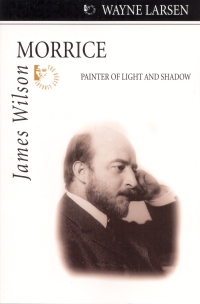| ________________
CM . . .
. Volume XV Number 5. . . .October 24, 2008
excerpt:
Wayne Larsen, a journalist, educator and landscape painter delivers in James Wilson Morrice another first-rate biography of an important Canadian artist. His A.Y. Jackson: A Love for the Land, also published in "The Quest Library," was favorably reviewed in CM Vol. 11, No. 7, Nov. 26, 2004. J.W. Morrice is a name that will be recognized by anyone who is moderately familiar with the history of Canadian painting. In this very readable volume, Larsen details Morrice's life, the development of his artistic style, highlights some of his important works, and sets the story in context so that readers will learn about artistic and world developments in Canada, France, and the United States during the six decades that Morrice lived. James Morrice was born in 1865, the third son of prosperous Montreal textile merchant David Morrice and his wife Annie. It was expected that he would join the family business as an adult, and thus James earned a B.A. at the University of Toronto and then completed a law degree at Osgoode Hall, also in Toronto. However, Morrice was determined to pursue further studies in art in Paris, France, which was the center of artistic development in the western world. It was a neighbor, William Cornelius Van Horne, the Canadian railway czar and art patron who recognized James's talent and who convinced his father to allow him to study abroad with the knowledge that he had his law degree and the family business to fall back on. As things turned out, Morrice never had to rely on his backup plan. Many themes emerge in the work. Morrice's interest in art extended to music, and he found great solace in his beloved flute. Inspiration in the circus remained a lifelong trend, as he sought to capture movement, light and humanity in his painting. He used the pochade, or small wood panel that fit into his pocket and on which he would make preliminary oil sketches for later development at his Parisian studio. Love of travel and discovering new scenery and people to paint remained a lifelong habit. In fact, Morrice was in Tunis, when he finally succumbed in 1924 to a life of alcohol abuse and was buried in a local cemetery. In his early years in Paris, Morrice moved away from watercolour to oil, yet he thinned his paint and spread it sparingly on the canvas and left some of the white canvas unpainted.
Unlike other nineteenth century Canadian artists whose work was of the realist school, Morrice sought simplicity in his painting.
Larsen uses recreated dialogue to move the story along, but he does so in a sparing and unobtrusive way. He also refrains from making a lot of speculations as to Morrice's inner thoughts. A few do creep into the story, and the lack of footnoting makes it unclear whether they are based on letters or other writings or pure speculation on the writer's part. Several photographs of James Morrice and his parents, the building housing his Parisian studio, and the family home in Montreal are complemented by six black-and-white reproductions of Morrice's paintings, including a portrait of his long-time mistress, Léa Cadoret. It is unfortunate that these could not be produced in colour, but curious readers should be able to find more reproductions in other books or on the Internet. Other features of the book include a useful index that includes many sub-entries for James Morrice, and a chronology in two columns focusing on the life of Morrice on the left and events in Canada and the world on the right. There is a strong emphasis on artists and artistic developments in the listings. Curiously, Larsen notes the imposition and repeal of prohibition in the U.S.A. but doesn't note the corresponding events in Canada. A bibliography of sources consulted contains 14 titles, all but one in English. Many of these are exhibition catalogues that may not be readily available to readers who do not have access to large public libraries. Highly Recommended. Val Ken Lem is the collection evaluation librarian at Ryerson University in Toronto, ON.
To comment
on this title or this review, send mail to cm@umanitoba.ca.
Copyright © the Manitoba Library Association. Reproduction for personal
use is permitted only if this copyright notice is maintained. Any
other reproduction is prohibited without permission.
NEXT REVIEW |
TABLE OF CONTENTS FOR THIS ISSUE
- October 24, 2008.
AUTHORS |
TITLES |
MEDIA REVIEWS |
PROFILES |
BACK ISSUES |
SEARCH |
CMARCHIVE |
HOME |
